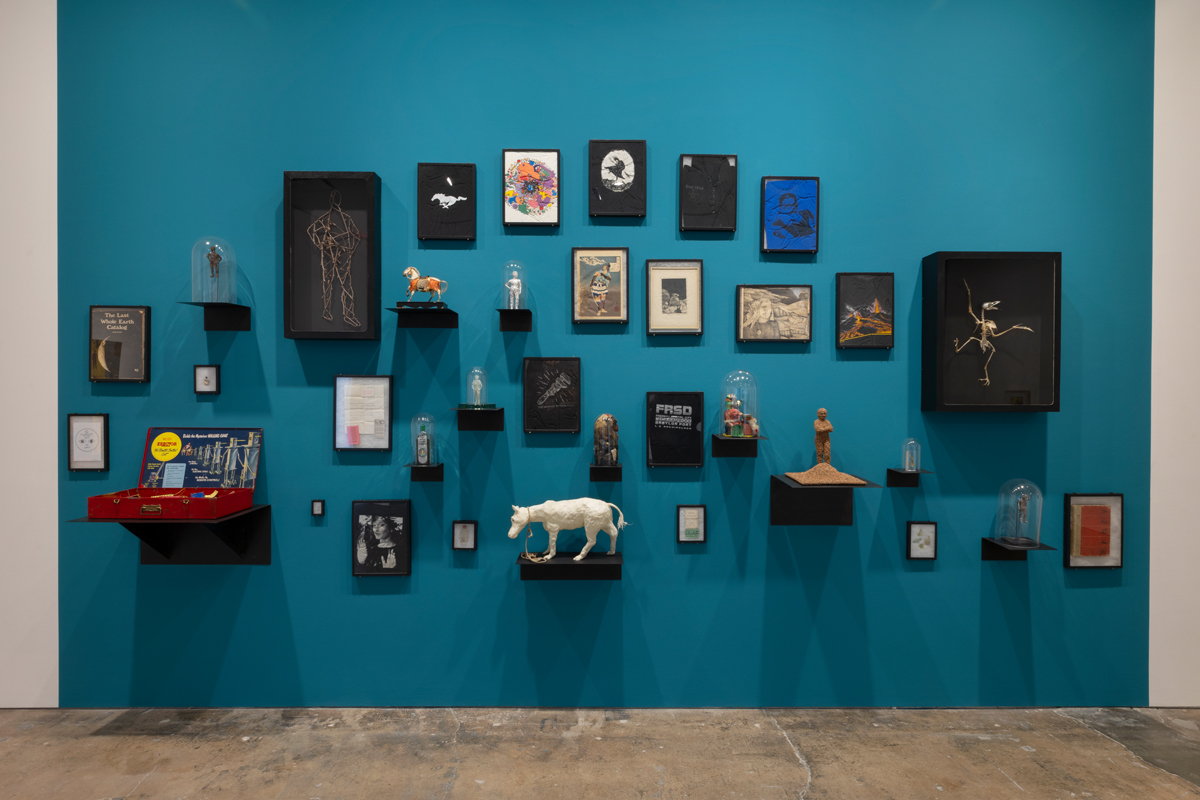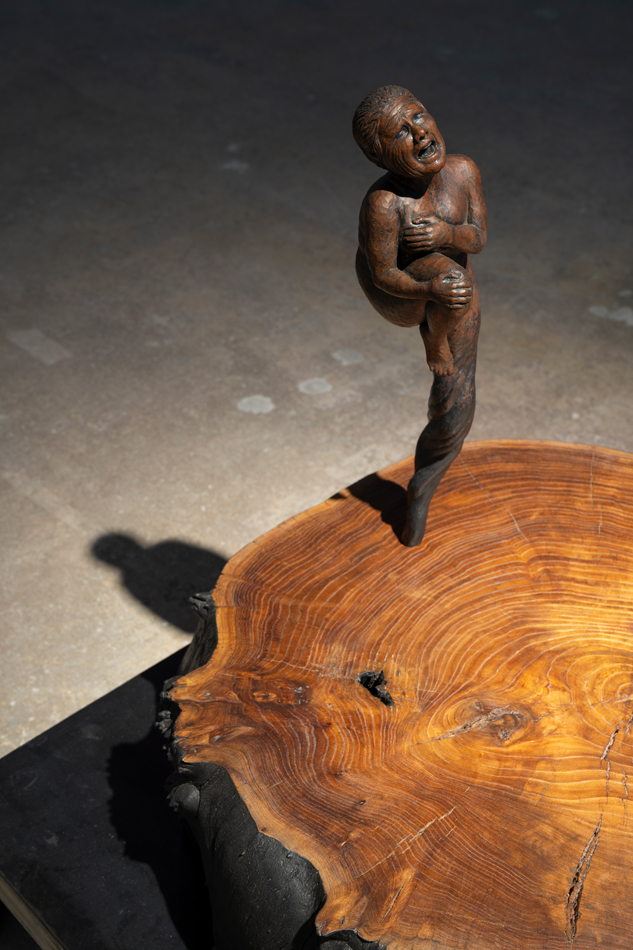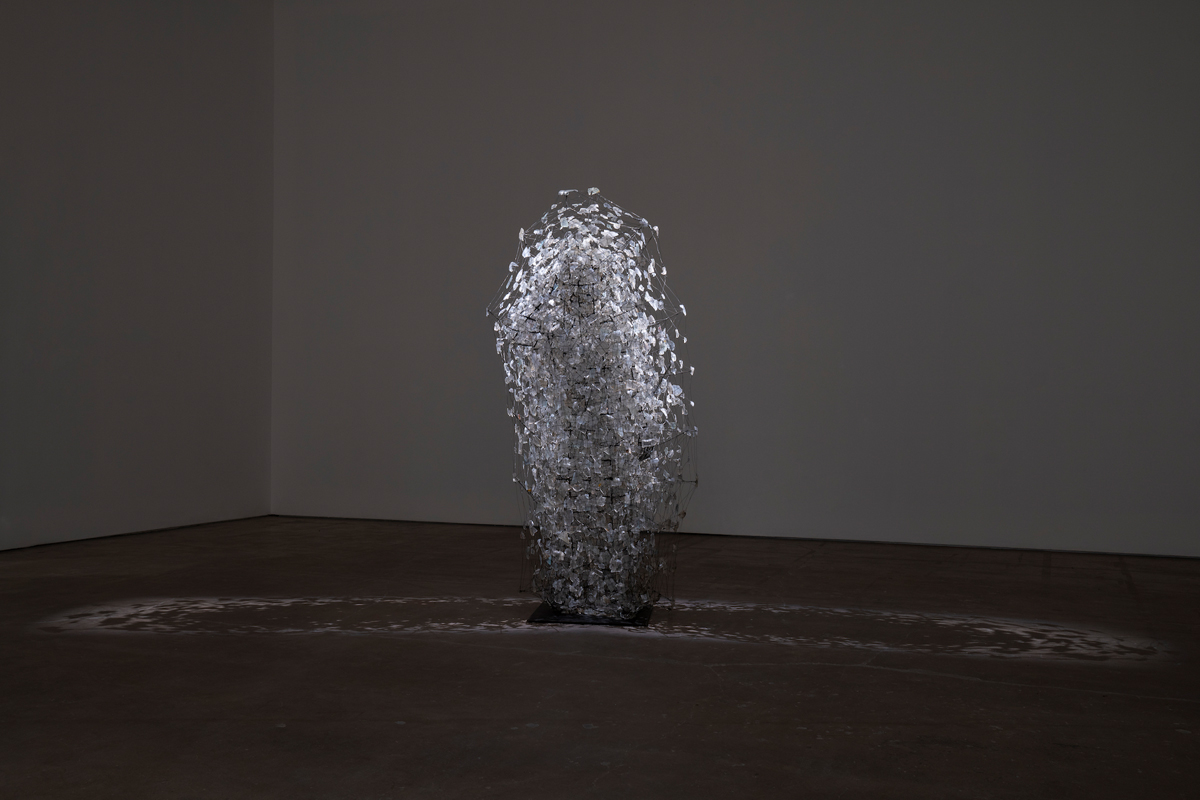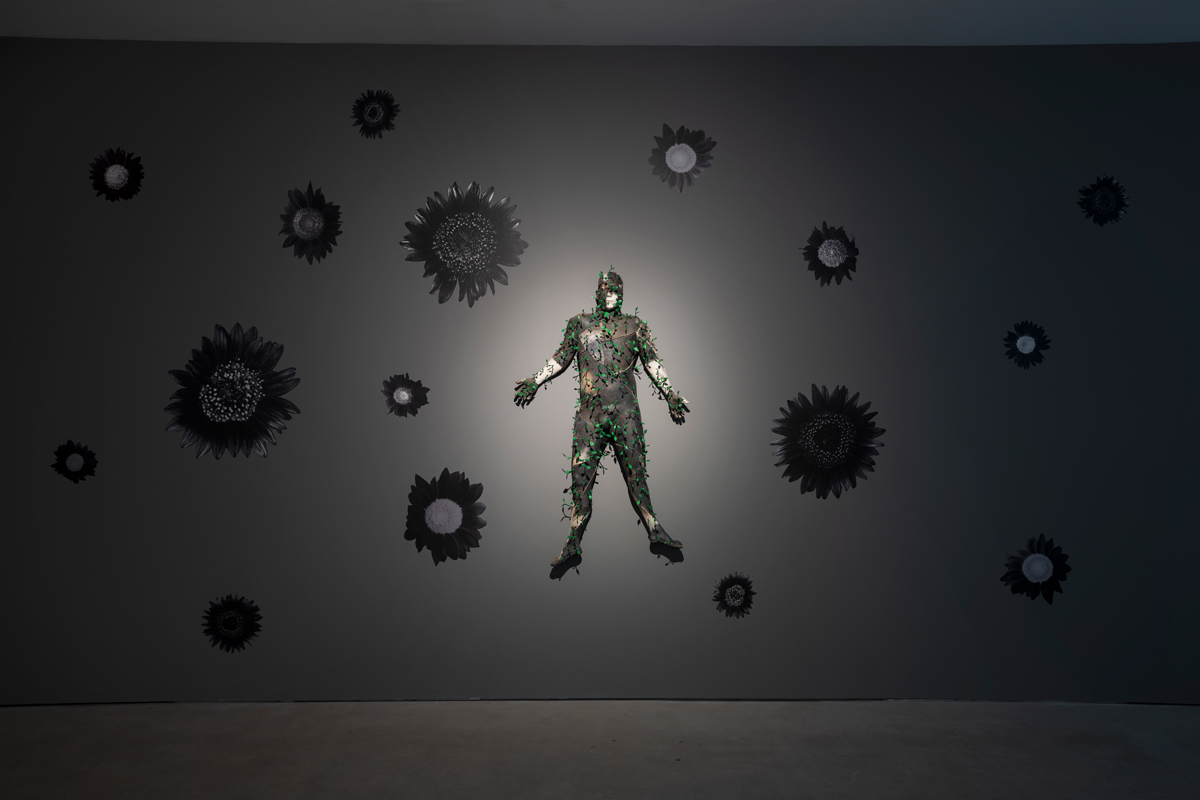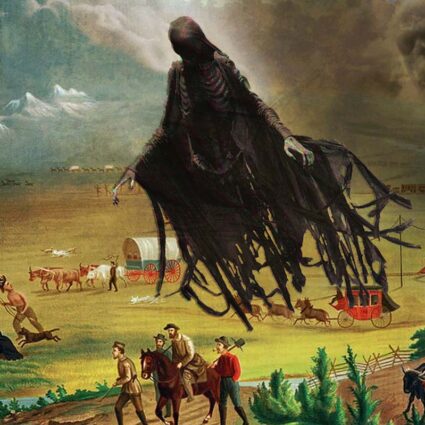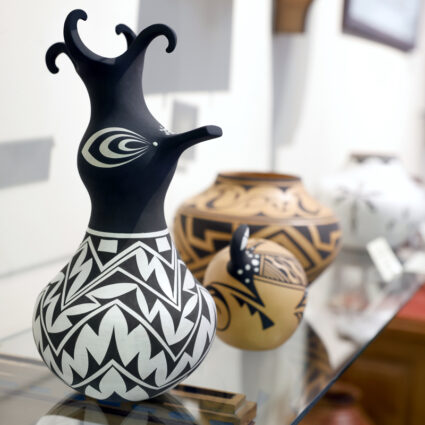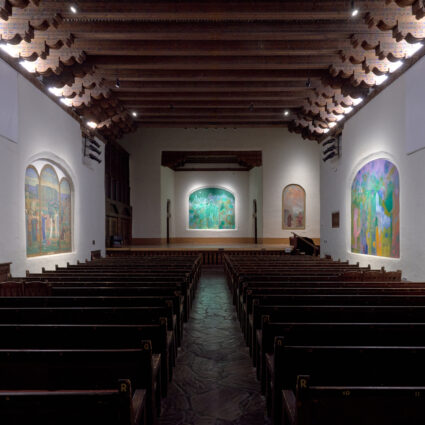In what Time Travel feels like, sometimes, New Mexico–based artist Erika Wanenmacher’s major solo exhibition at SITE Santa Fe, the artist collapses the distance between the mystical and the everyday.
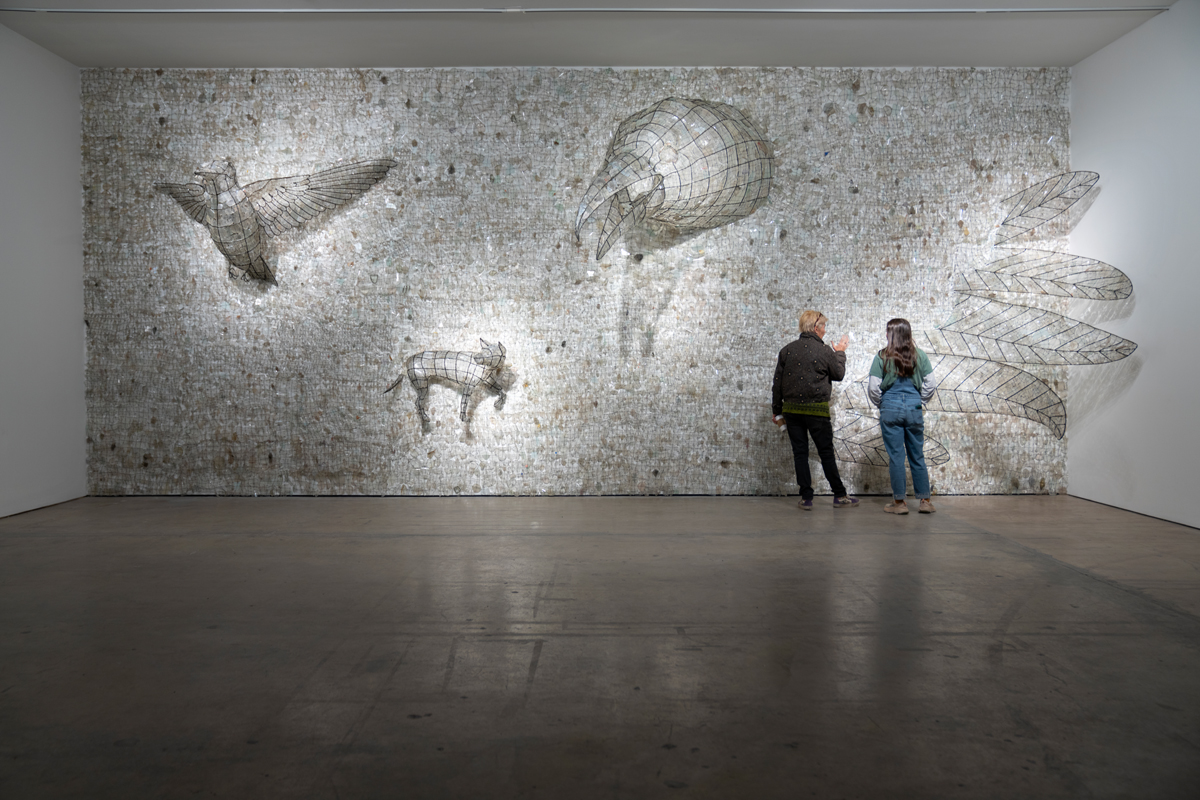
Erika Wanenmacher: what Time Travel feels like, sometimes
November 15, 2024–February 3, 2025
SITE Santa Fe
Bear in mind that you might not be wearing a cool outfit when time travel hits. We hope to be wearing some iridescent veil or a pragmatic spacesuit at moments such as these, but time travel could just as well catch you when you’re sweating over the stove, or tripping over a tree root.
Erika Wanenmacher knows this to be true. When she time travels, she doesn’t look particularly witchy or transcendent. She’s pretty much in her uniform: black t-shirt and slouchy jeans. Even when she’s sassing a praying mantis or chilling with a bumblebee.
You can see pieces of her uniform upon entering her solo exhibition at SITE Santa Fe, what Time Travel feels like, sometimes. The exhibition opens with a salon-style installation of personal curios, relics, and effigies, including some of the artist’s t-shirts, emblazoned with cultural references or logos. This cabinet of curiosities is something like a cipher—the same images or likenesses appear throughout the artist’s works, threading objects and images together, creating narrative thrust, echoes, and callbacks.
Some of these items are special, but most are… not. The title, what Time Travel feels like, sometimes, is your first clue that Wanenmacher is not overly precious or punctilious with her practice.
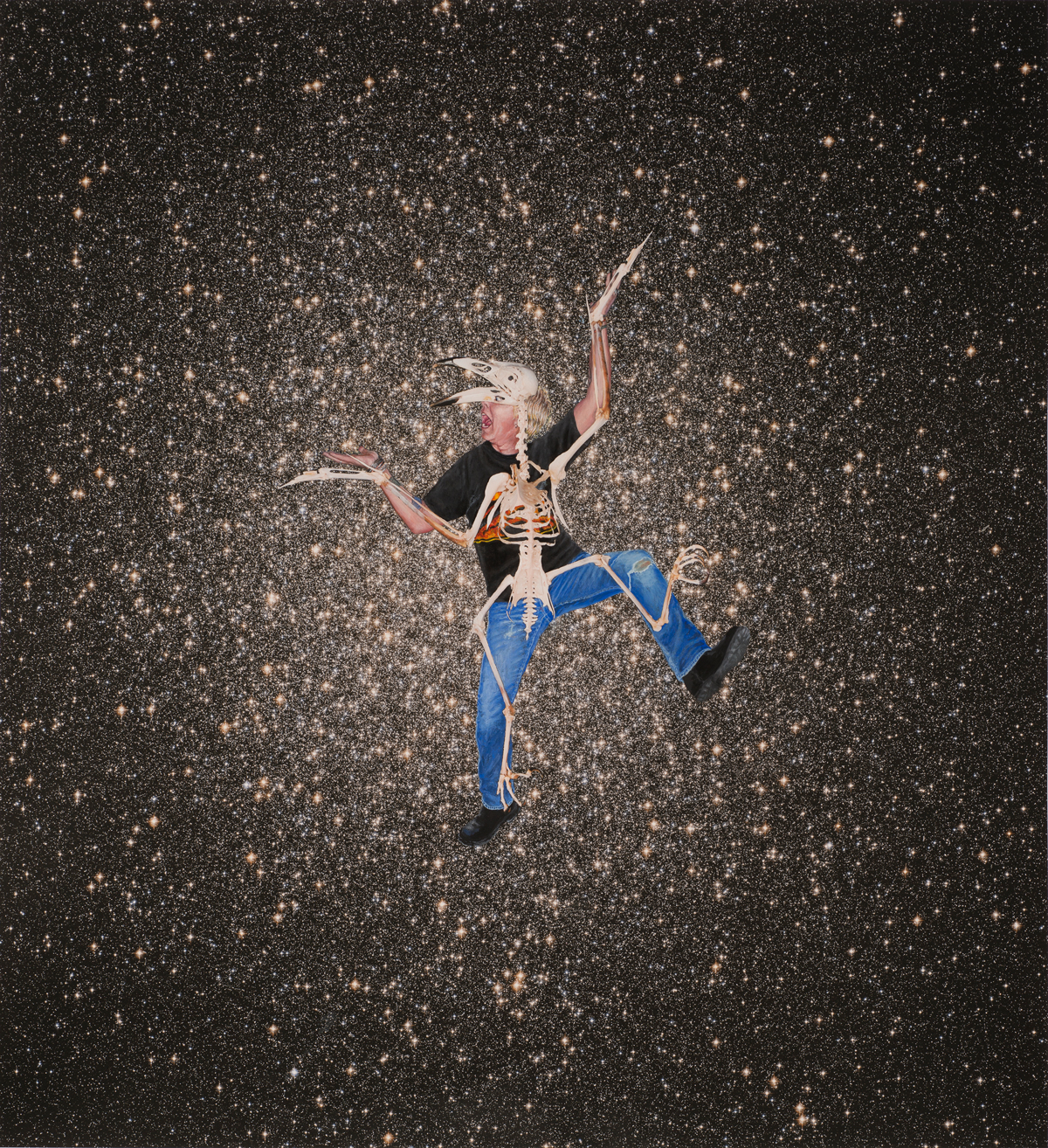
In a suite of 2D works, Wanenmacher uses an alchemy of gouache on top of photography to collapse the lyrical and the “real.” The images are quirky-verging-on-goofy. In Allies (2018), her diminutive self-portrait joins a hummingbird in the sky, arms spread, palms to the heavens. In Transcendence (2017), she adopts the position of a bird skeleton (spotted among her curios), face in full squawk. However silly, she projects herself into a state of death and osteomancy. Elsewhere, she nonchalantly hitches a ride on the tail of a plane.
In this series, time scales collapse when the literality of photography merges with the unabashed channeling of dream states, memories, and projections. Perhaps this is what time travel feels like, sometimes. Not so much the sci-fi journey to another era, but instead the more accessible contemplation of time on the scale of the hummingbird, whose wings move faster than humans can perceive.
Throughout all of her time-travel works, the artist depicts herself. Her likeness appears again and again. Originating from scale-model self-portraits on the curio wall—standing casually, arms crossed, or in hand-on-hip-contrapposto, Wanenmacher projects herself into a variety of postures and phenomena embedded with the signs and symbols of witchcraft, myth, nature, and the supernatural. A self-identified practicing witch, her spiritual and intellectual pursuits point to a person capable of astral projection, accessing altered states of being, and shifting time and scale.
Over there, her face inhabits stone, water flowing from mouth and eyes in a working fountain. Here, she twists out of a slab of a tree, like some kind of manic Daphne. In a time-lapse video, her effigy, wrought in branches, stands in a pond in La Cienega, New Mexico. Elsewhere in a painting, this branch-effigy burns, Wicker Man-esque, and she floats within, untouched—and she looks on at her own transformation and observes the limits of what fire can do to one’s self.

In the show’s eponymous sculpture (2019–24), her figure is the basis of an exploded view of the self rendered in kaleidoscoping layers of found glass. Pieces of bottles, jars, ordinary detritus bound by wire, become the iridescent veil of our time-travel dreams, a wondrous vehicle for psychic expansion.
Wanenmacher may figure into much of the imagery, but her main character energy is mitigated by her refusal to self-aggrandize. Instead, her presence is a gloss, a vessel for our own projections. We may be witnessing a deeply personal journey, but not to our exclusion. The viewer is brought along, tracing the artist’s inspirations and influences, and the multiple iterations of her presence (her everywhere-at-once-ness) indicate that time is not linear—not for a person, not for a community. Her likeness in Downwinders (2007–2021), in which a blackened, ashen figure sprouts green seedlings, points to radioactive decay and collective karma—the darker reverberations of time-shattering, multigenerational events.
In a stunner of an installation and the obvious capstone of the show, Liminal (2020–24) is a wall of found glass out of which animal figures emerge. A supersized raven and hummingbird pierce the veil; a canine lifts a paw, turning his head as though hearing something we on the earthly plane cannot. It’s a shimmering apparition. But it is not otherworldly, it is decidedly both here and there, thanks to the artist’s material choices.
Awkwardness results from stuffing this kind of practice into a white box gallery. In the tabula rasa of the museum, this work is sapped of some of its mana. I only wish SITE had taken more cues from the artist’s intuitive grasp of materia and alchemy and allowed for her works to live in messy proximity, interacting mystically and visually with each other. A tantalizing library of Wanenmacher’s books on mysticism, metaphysics, science, nature, and more, occupies one corner. Let’s swap the stone-cold bench for a cushy settee.
Wanenmacher’s use of assemblage, her DIY aesthetic, and her found and repurposed materials suggest disregard for the preciousness of presentation in favor of the truer preciousness of objects that carry stories and bear witness through the cycles of time. Far from rudimentary or simple, Wanenmacher’s use of symbols, her humor, and her grounded mien tell me she’s assured in channeling her creative practice—no affect or posturing distracts from her vision. She has the conviction and humility of knowing that time travel is the easy part—it’s just one wingbeat of the hummingbird away.
